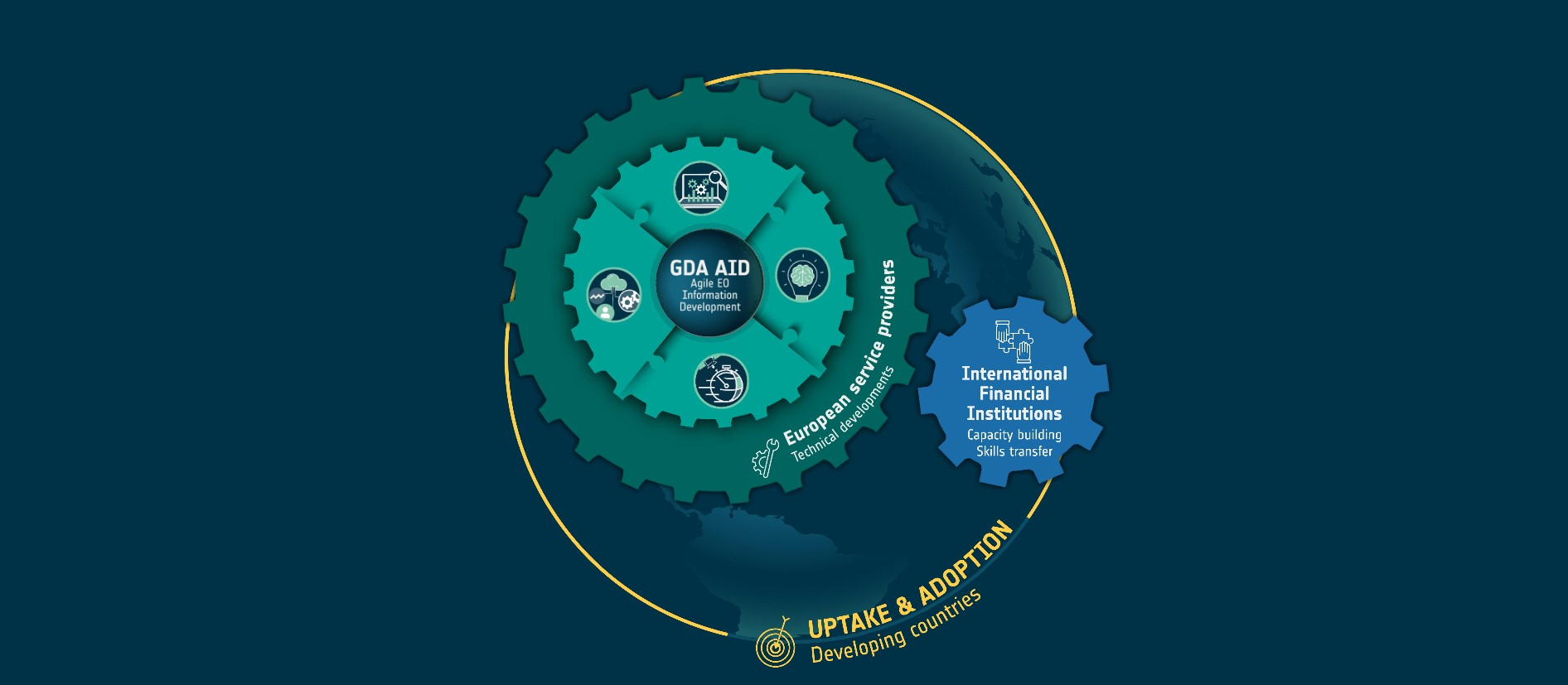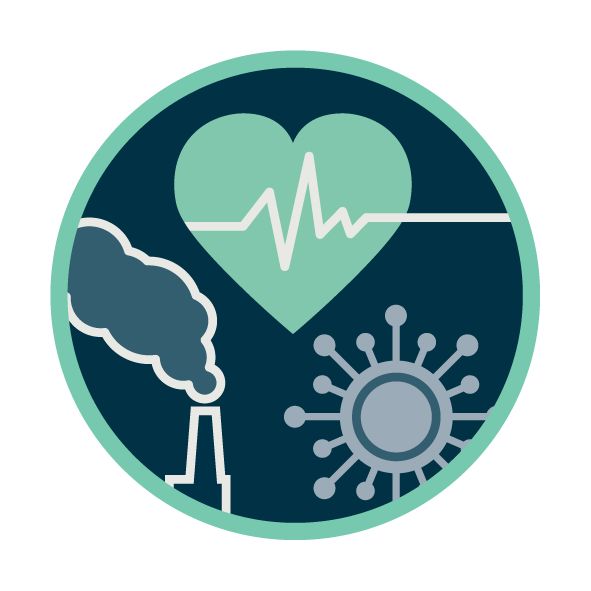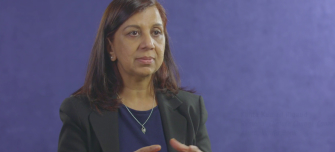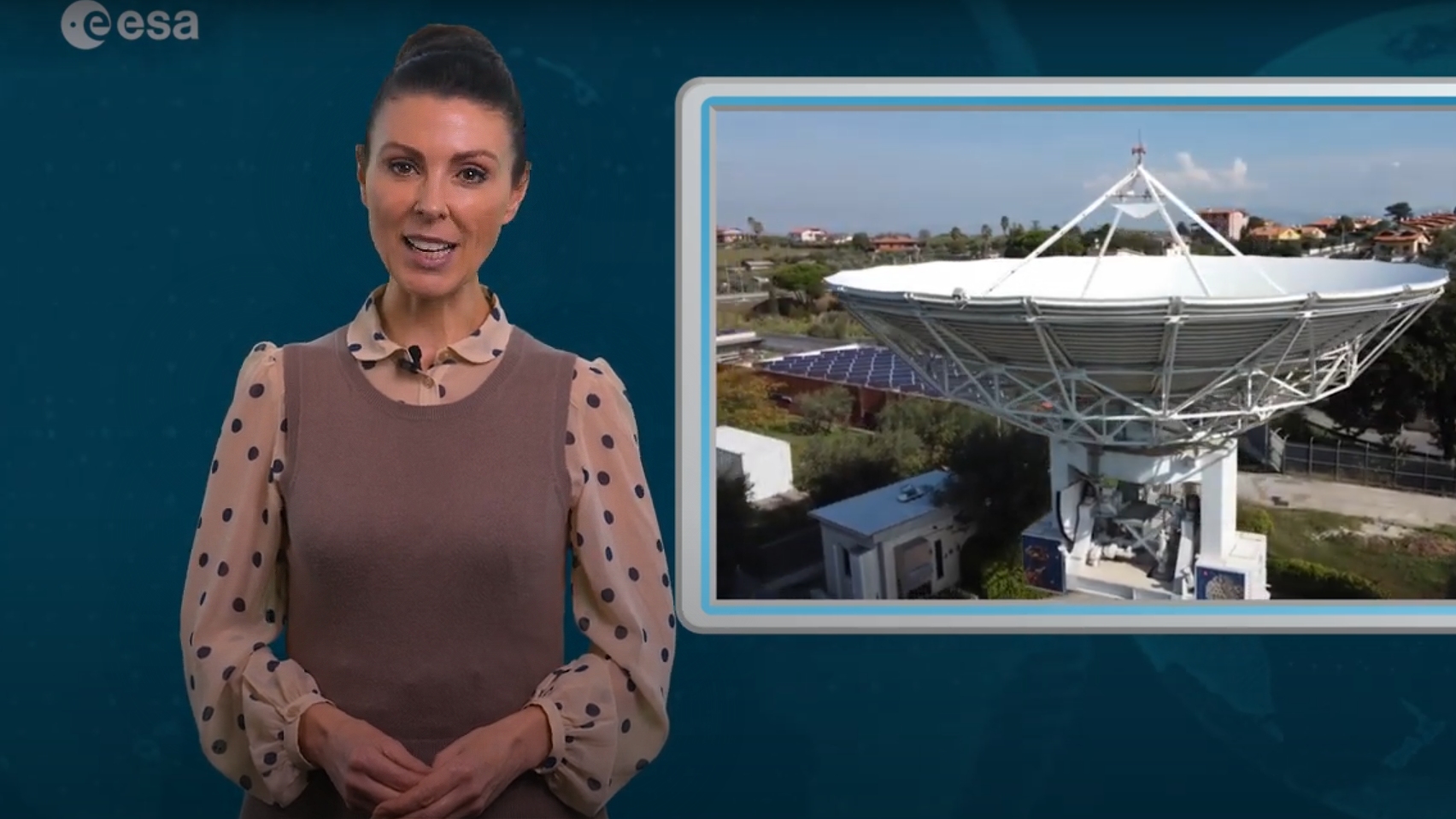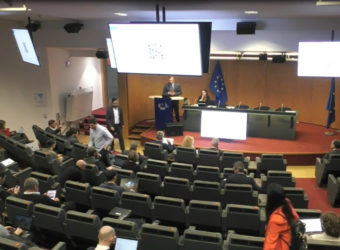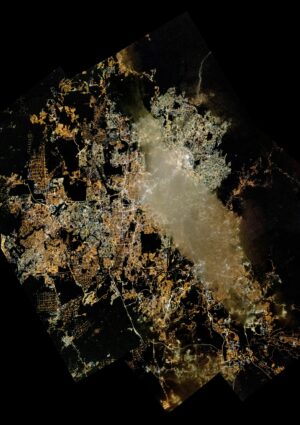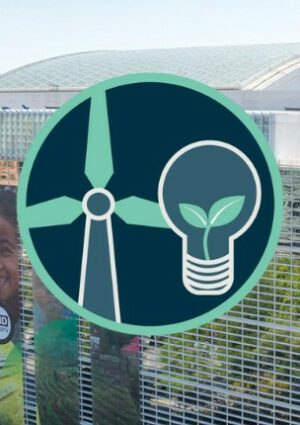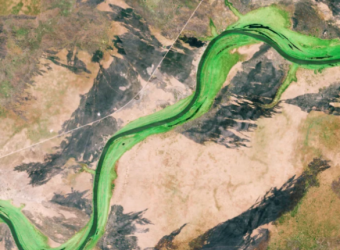As Bangladesh ramps up its efforts to reduce greenhouse gas emissions under the 2015 Paris Agreement, innovative collaborations are shaping the country’s clean energy landscape. The partnership between the European Space Agency’s (ESA) Global Development Assistance (GDA) programme and the World Bank is driving the expansion of biogas and biomethane markets, leveraging advanced Earth Observation (EO) technologies to unlock Bangladesh’s untapped potential in renewable energy production.
In its updated Nationally Determined Contributions (NDCs), Bangladesh commits to a 6.7% unconditional reduction in greenhouse gas emissions by 2030, with conditional targets aiming for a total reduction of 15.1%. Central to these efforts is the scaling up of biogas production—a critical element in the nation’s $3.6 billion investment strategy for clean energy. However, despite substantial feedstock resources from agriculture, municipal waste, and industry, the biogas sector remains significantly underdeveloped.
ESA and the World Bank: A Powerful Partnership for Biogas Development
In response to these challenges, the ESA’s GDA, through its Clean Energy thematic activity, in partnership with the World Bank, is transforming the way Bangladesh approaches its clean energy goals. By integrating satellite data into the World Bank’s diagnostic study, this collaboration is setting the stage for the industrial-scale production of biogas and biomethane. The ESA GDA’s advanced EO capabilities are being used to identify key methane emission sources and optimise feedstock sourcing, enabling targeted investments and strategic planning.
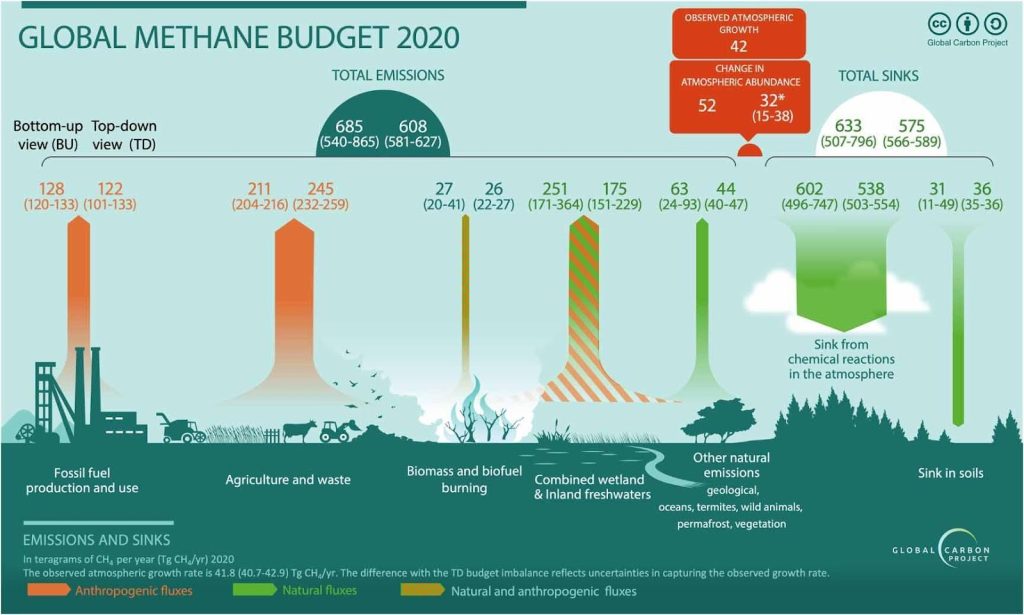
The World Bank’s role in conducting a comprehensive market assessment is vital. Together with ESA, the study is exploring the economic viability of large-scale biogas and biogas-to-biomethane sectors. The assessment includes the identification of bio-digester feedstock potentials using EO technologies and the scaling up of biogas-to-biomethane production. This partnership is equipping Bangladesh with the data-driven insights needed to move from small-scale operations to a robust biogas market capable of displacing fossil fuel imports.
Unleashing Biogas and Biomethane Potential
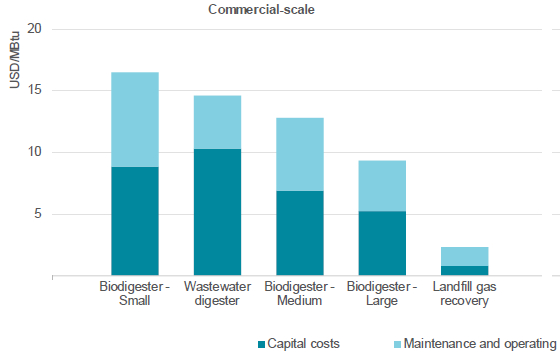
Natural gas currently dominates Bangladesh’s energy mix, contributing 68% to national consumption. With domestic gas production peaking in 2016 and increasing dependence on imports, there is an urgent need for homegrown, renewable alternatives. Biogas, produced from organic waste, is a promising solution. Yet, despite the availability of feedstock from sources like agriculture, industrial food processing, and municipal waste, the full potential of biogas remains untapped.

ESA’s GDA Clean Energy activity is addressing this gap by using its EO capabilities to identify methane emission hotspots, particularly from landfills and sewage treatment sites. A time series of Sentinel-5 satellite data, spanning five years, has been instrumental in identifying areas with recurring methane emissions. This allows the World Bank and its partners to prioritise these sites for more targeted assessments of biogas recovery potentials, supporting both environmental goals and the expansion of a sustainable energy market.
Global Methane Mitigation: A Shared Objective
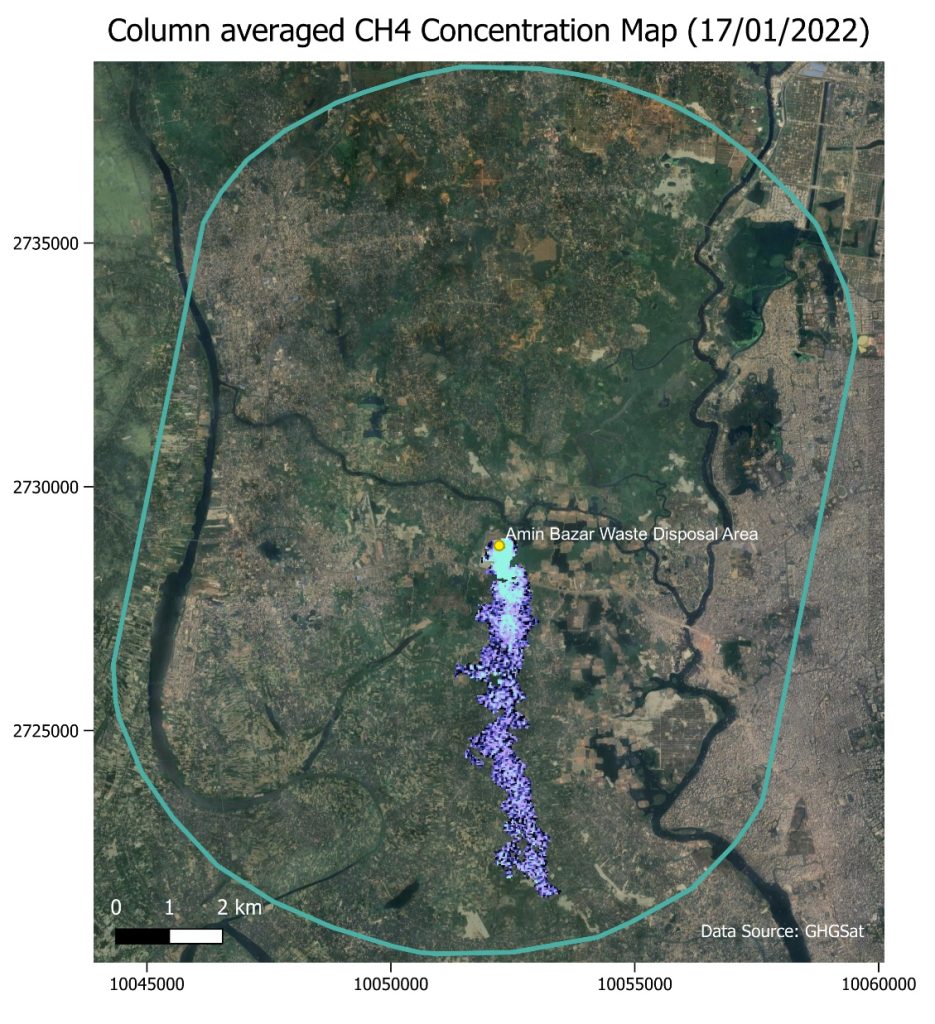
Methane, with over 80 times the warming potential of CO₂, represents both a challenge and an opportunity for Bangladesh’s clean energy ambitions. The Global Methane Pledge, supported by more than 158 countries, including Bangladesh, aims to reduce methane emissions by 30% by 2030. Through the ESA GDA’s satellite monitoring capabilities, the World Bank is able to integrate methane emission data into its broader clean energy strategy, helping to identify critical methane sources for biogas recovery.
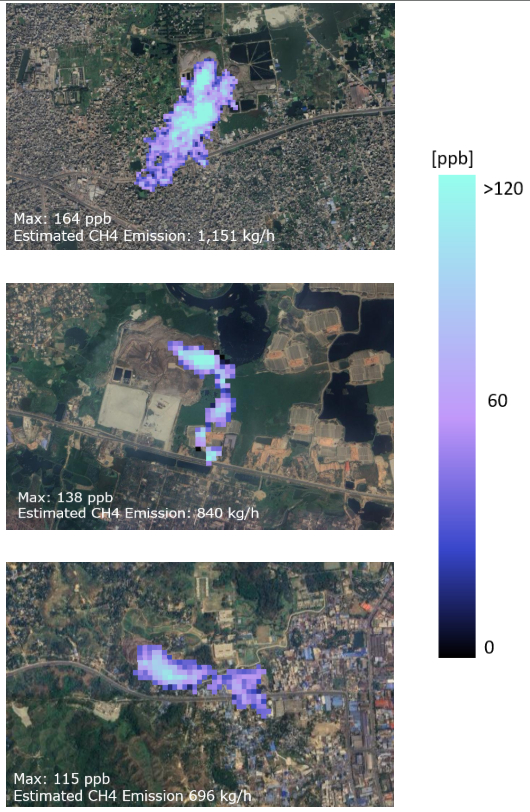
ESA’s GDA Clean Energy activity uses high-resolution GHGSat data to confirm methane emissions at a local level, supporting the development of the project on methane recovery from landfills. The methane plumes detected from Bangladesh’s landfills highlight the potential for significant emissions reduction, while also presenting a resource that can be converted into clean energy. This targeted approach not only advances Bangladesh’s methane mitigation efforts but also aligns with global climate goals.
Strategic Planning with Earth Observation
Another key innovation from the ESA GDA-World Bank partnership is the use of EO data to guide the scaling of biogas production from agriwaste. By combining satellite imagery with land use, climate, and socio-economic data, this approach enables precise spatial modelling of feedstock sourcing. Rice husk, for example, is identified as an underutilised agricultural byproduct with significant potential for biogas production. The ability to map areas where feedstock can be sourced sustainably minimises land-use competition and negative ecological impacts.
The spatial modelling provided by the GDA also optimises biogas production by factoring in proximity to energy demand, transport networks, and existing gas infrastructure. This ensures that biogas production is not only economically viable but also aligned with local energy needs, reducing costs and emissions associated with feedstock transport. Such strategic planning strengthens Bangladesh’s capacity to expand renewable energy in a way that maximises efficiency and sustainability.
This collaboration extends to biomethane, a purified form of biogas that can be integrated into existing gas distribution infrastructure. The World Bank’s study, supported by the GDA, is assessing the feasibility of scaling up biomethane production, presenting a unique opportunity to leverage Bangladesh’s existing natural gas networks. This could significantly reduce reliance on imported Liquefied Natural Gas (LNG) while creating new avenues for renewable energy development.
A Sustainable Energy Future
The partnership between ESA’s GDA and the World Bank exemplifies how international collaboration, powered by cutting-edge technology, can drive sustainable development. By integrating EO data into the clean energy strategy, the partnership is enabling Bangladesh to optimise its resources, reduce emissions, and expand its renewable energy capabilities.
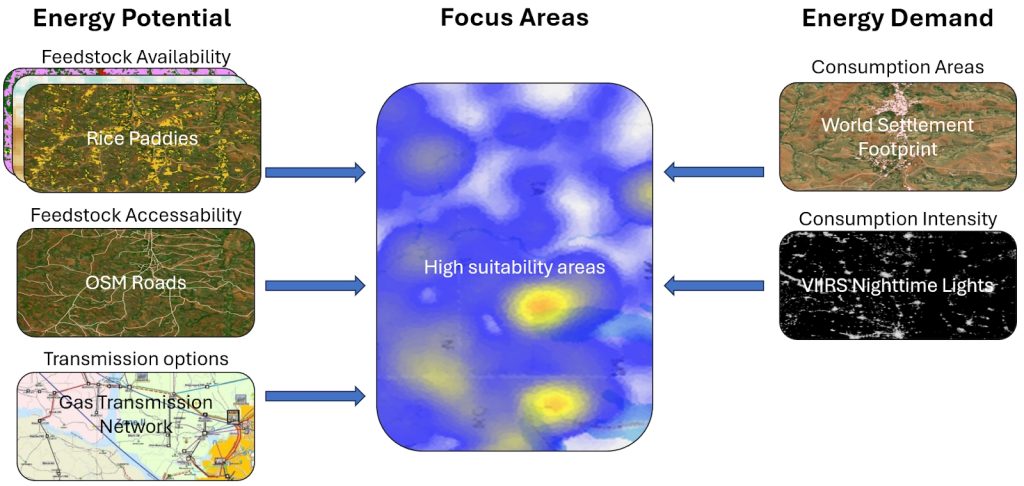
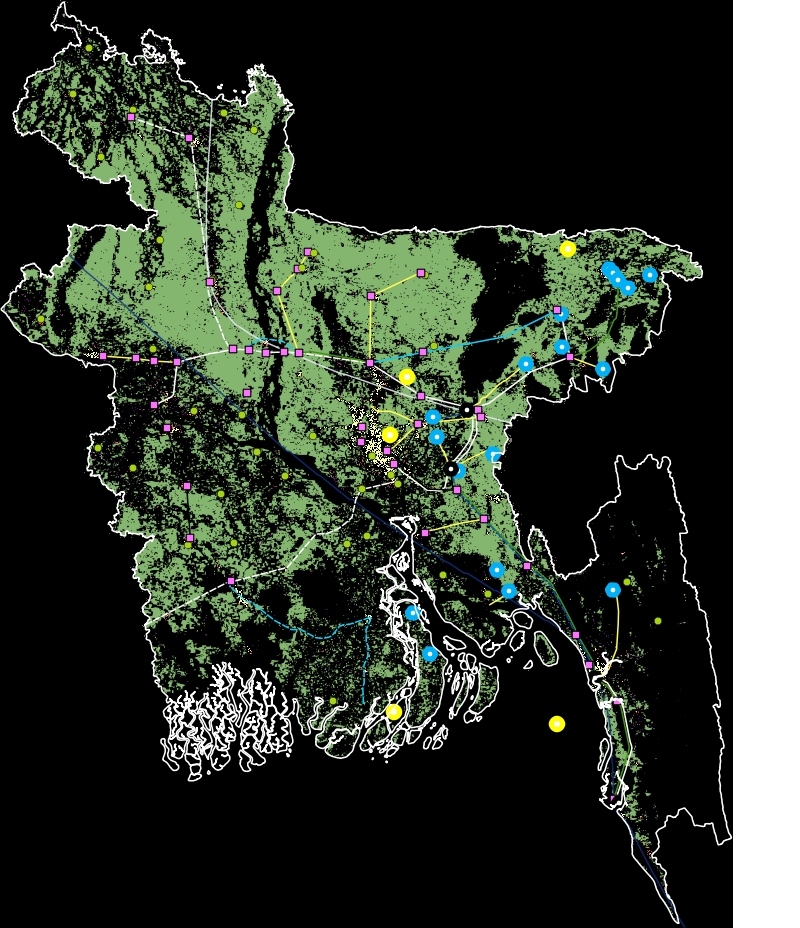
As Bangladesh works toward achieving its Nationally Determined Contributions (NDCs), the collaboration between ESA’s GDA program and the World Bank is laying the groundwork for a biogas and biomethane market that has the potential to transform the country’s energy landscape. The outcomes of the ESA GDA Clean Energy activities are directly utilised by the World Bank to evaluate the technical, economic, and commercial feasibility of biomass gasification and biogas upgrading solutions, aimed at scaling biomethane production. This initiative facilitates strategic planning by considering the entire value chain, including technology readiness, demand scenarios, infrastructure investment needs, and associated impacts such as operational expenditures, end-consumer pricing, feedstock yield, and emissions.
A key contribution of the ESA GDA activity is its spatial analysis, which provides valuable insights for regional benchmarking of expected production costs. This information is critical for developing business models for industrial-scale biogas and biogas-to-biomethane value chain expansion. These models address regional barriers, risks, and mitigation strategies, creating a comprehensive roadmap for scaling sustainable energy solutions. The World Bank initially demonstrated strong interest in scaling the analysis across Bangladesh, initiating the procurement process with the ESA GDA Clean Energy consortium partner RSS; however, shifting political priorities in the region have temporarily paused the initiative. The joint effort underscores the importance of innovative partnerships in tackling global climate challenges and serves as a replicable model for other developing nations seeking to align economic growth with environmental sustainability.



